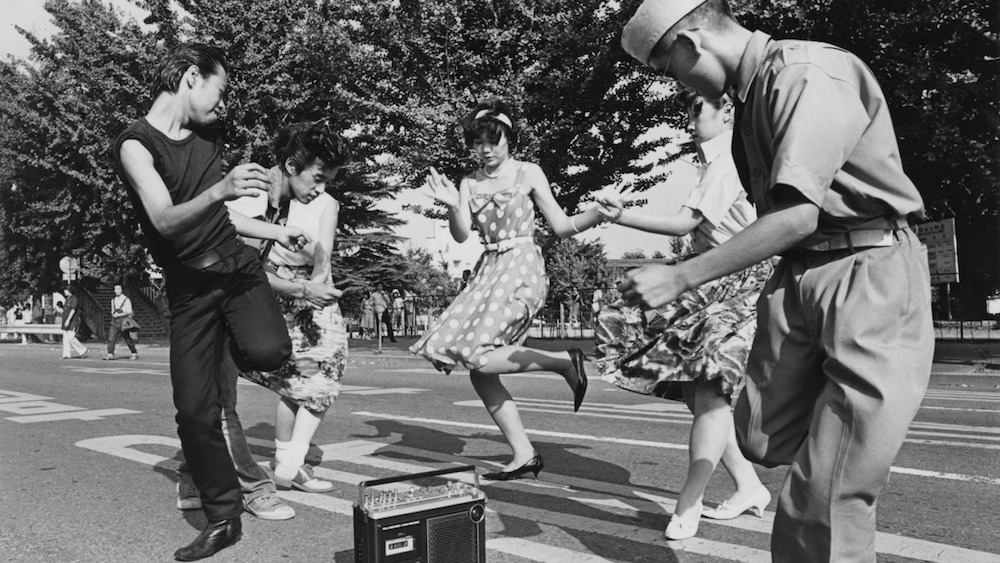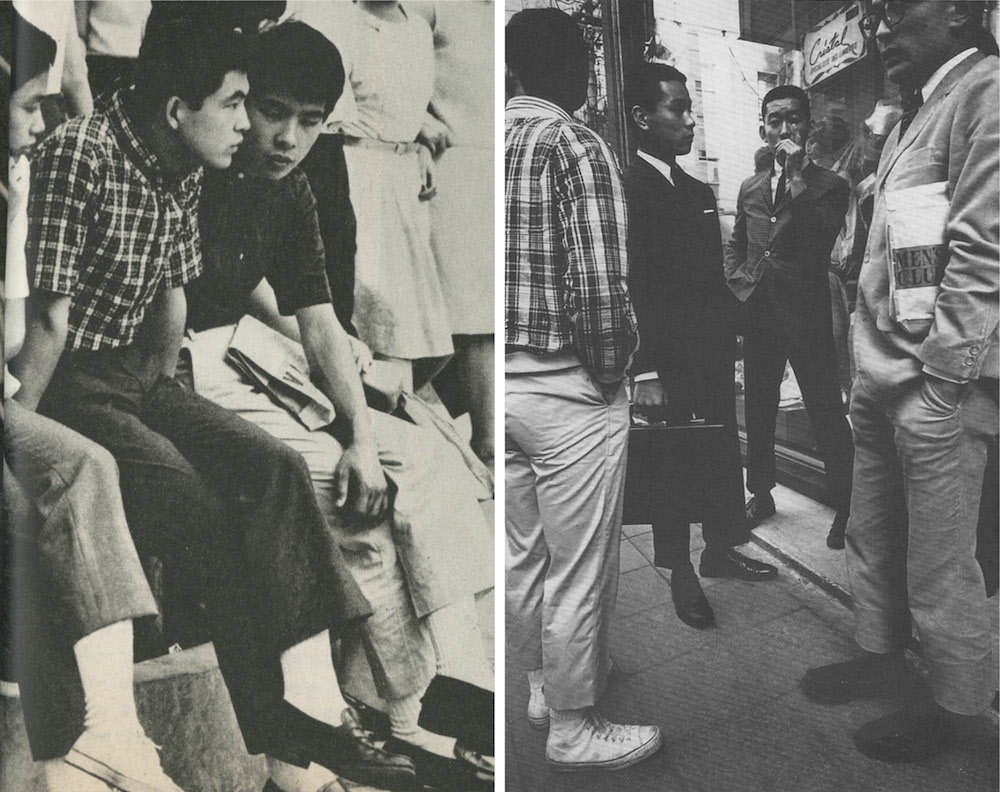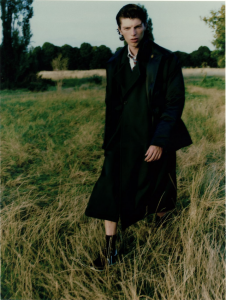Writer W. David Marx chats to David Hellqvist about his first book, cultural exchange in fashion and why Japanese designers now do Americana better than US brands

There are people who think that clothes are just garments you pick up from the floor in the morning when you get dressed, and that the sole purpose of fashion is to keep you decent and warm. And then there are those who see clothes for what they really are: social signifiers and cultural snapshots of a time and a place. Author W. David Marx, who recently published Ametora: How Japan Saved American Style, is certainly part of the latter group.
Having lived and studied in Tokyo for 13 years, Marx has been observing the Japanese fascination with Western culture, and especially American fashion, up close for some time. In his book, a 250-page academic take on this cultural exchange between east and west, Marx starts by considering Japan’s recovery after the Second World War. After their surrender in 1945, it wasn’t just the buildings that needed to be reconstructed but the entirety of Japanese society, politically and culturally – and that included fashion.
Flooded by GIs, Japan quickly turned its eye to America for inspiration. US consumerism spread across the world in the 1950 and 60s and it’s been a political and pop-cultural superpower ever since. But the Japanese took it one step further – they didn’t just start wearing the jeans, T-shirts and leather jackets sported by American teenagers but began manufacturing the pieces themselves. Not only that, they improved on the quality, pushed the fabric technology and developed new styles in the same vein. Today, if you’re buying high-end Americana, it’s quite likely to have been designed and manufactured in Japan.
Here, Marx explains how he came to write the book, the roots of the Japanese fascination with American style and how Ametora has been assimilated into Japanese culture.

When, where and how did the idea for the book come from?
Around 2008, I started – and then abandoned – writing a more generic history of Japanese youth fashion. I then picked up the idea again in 2010 when the English edition of Take Ivy (the seminal fashion photography book documenting the style of Ivy League students) came out in the United States. I realised that there was a lot of interest in the Japanese version of Americana but no one was asking why it happened. I met Shosuke Ishizu, one of the writers of Take Ivy, around the same time and I thought that there were lots of amazing back stories about Ivy coming to Japan that had never made it in to English. From there, I figured out a way to use the Ivy story as a way to then link all of the major American styles that took root in Japan – jeans, outdoor gear, rock ‘n’ roll, vintage and streetwear.
Why are the Japanese so obsessed with American and British culture and style?
There are two questions here – why did American and British styles come to Japan and then why did Japanese youth adopt them? In Ametora, I show that the growth of Western fashion in Japan was not exactly organic – brands made a very conscious effort to import the latest in American and British youth styles as a business venture. And then once the styles caught on, mostly with help from the consumer media, there was an entire industrial-media complex looking for the latest in Western trends and offering versions to young people, whether domestically made or imported.
In the book, I implicitly argue though that this really starts and centres on American styles. British looks have had their moments in Japan (mostly as a reaction against American looks), and probably inform the basic business look of Japan, but the core of Japanese menswear is Ivy-inspired.

Why do you think it is that the Japanese, arguably, do American and British style better than the Americans and Brits?
I actually can’t argue the British side of this because Savile Row still looms large in the world of British suiting but Japanese brands are making some of the most high-quality, authentic American-style casual wear – Loopwheeler for sweatshirts, any of the Okayama denim brands for jeans, Kamakura Shirts for button-down oxfords, Beams+ for a huge range of traditional college-shop type items. If it’s winter and you want a classic crewneck shetland sweater, it’s a lot easier to buy one in Tokyo than in New York.
When and where did this obsession start?
It started in the mid-1960s just as the Baby Boomer generation hit college age and it’s continued from there. Tokyo has always been the centre of Japanese pop culture and it was the streets of Ginza in 1964 with the Miyuki Tribe when the first true youth consumer sub-culture appeared.
What does Ametora mean, where does it come from?
Ametora is Japanese slang for ‘American traditional’. The word started sometime in the 1980s to describe East Coast WASP (White Anglo-Saxon Protestant) looks such as Ivy or Brooks Brothers suiting. I want to broaden the meaning – Ametora is the Japanified versions of any American clothing tradition, including jeans, West Coast outdoor gear or rock ‘n’ roll. At this point, it seems narrow to define ‘tradition’ as simply the East Coast.

Is true Japanese style and culture at risk because of their fascination with Western culture?
After the Second World War a majority of the Japanese wanted nothing to do with the militaristic ‘Japanese’ culture that emerged during wartime. In the case of fashion, there was nothing really ‘Japanese’ for men in the post-war era to start with. Adult men wore really boxy, vaguely-British style suits with no glamour. American youth style did not appear and replace Japanese style. It replaced nothing.
Furthermore, Ametora today is part of Japanese culture. People in Japan wear these styles of clothing because their fathers and brothers wore it, their media advocates it, Japanese brands make it and Japanese celebrities wear it – not because they’re told it’s what to wear to be like an American.
Is there a problematic side to this – that one country immerses itself so much in the style and culture of another?
Throughout its history, Japan has always adopted foreign cultures and mixed them with local cultures to make a new hybrid. Take ramen, which in Japan is considered a Chinese dish, but everyone knows it globally as Japanese. Ametora is a bit like ramen or tonkatsu (breaded pork cutlet) – it’s a unique thing that Japan provides to the world based originally on foreign models but is unmistakably Japanese.

Is this something that’s discussed in Japan in the domestic press, for example?
In the years after the Second World War, especially during the Vietnam War, a lot of Japanese who liked American pop culture began to question whether they should really indulge in American styles because the American government was up to no good. Over time though, those American styles started to burrow into Japanese culture and now wearing a button-down collar on a shirt does not really say something about America. Ametora has attracted interest in Japan for revealing that so many Americans now think the Japanese do American style better than Americans, but the book has also brought to the surface a lot of buried Japanese cultural history, forgotten even in Japan.
Ametora: How Japan Saved American Style is out now




